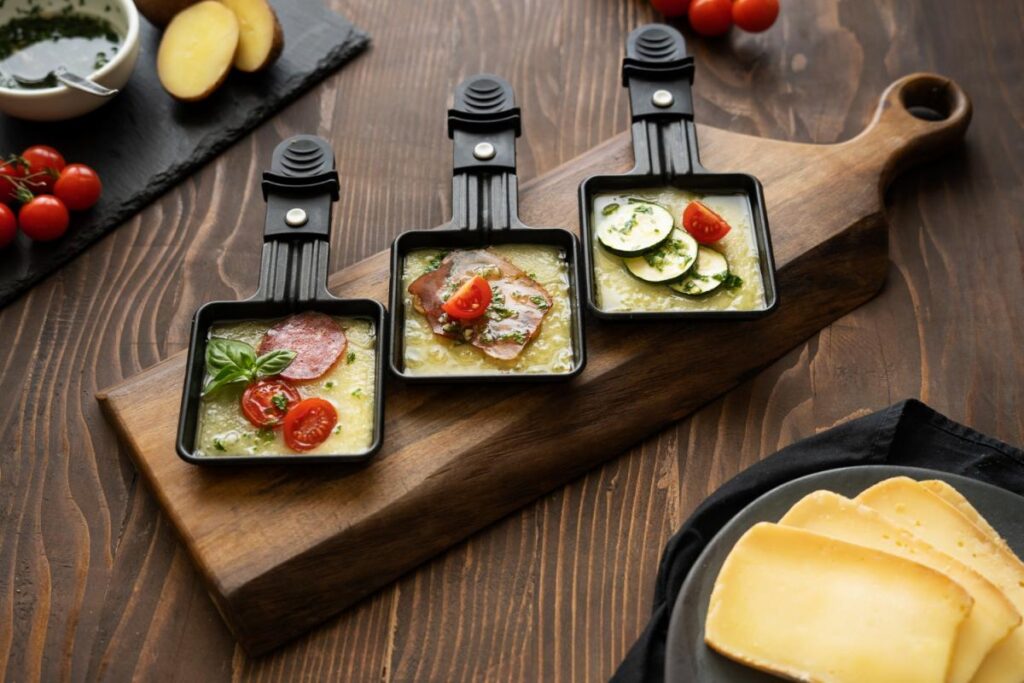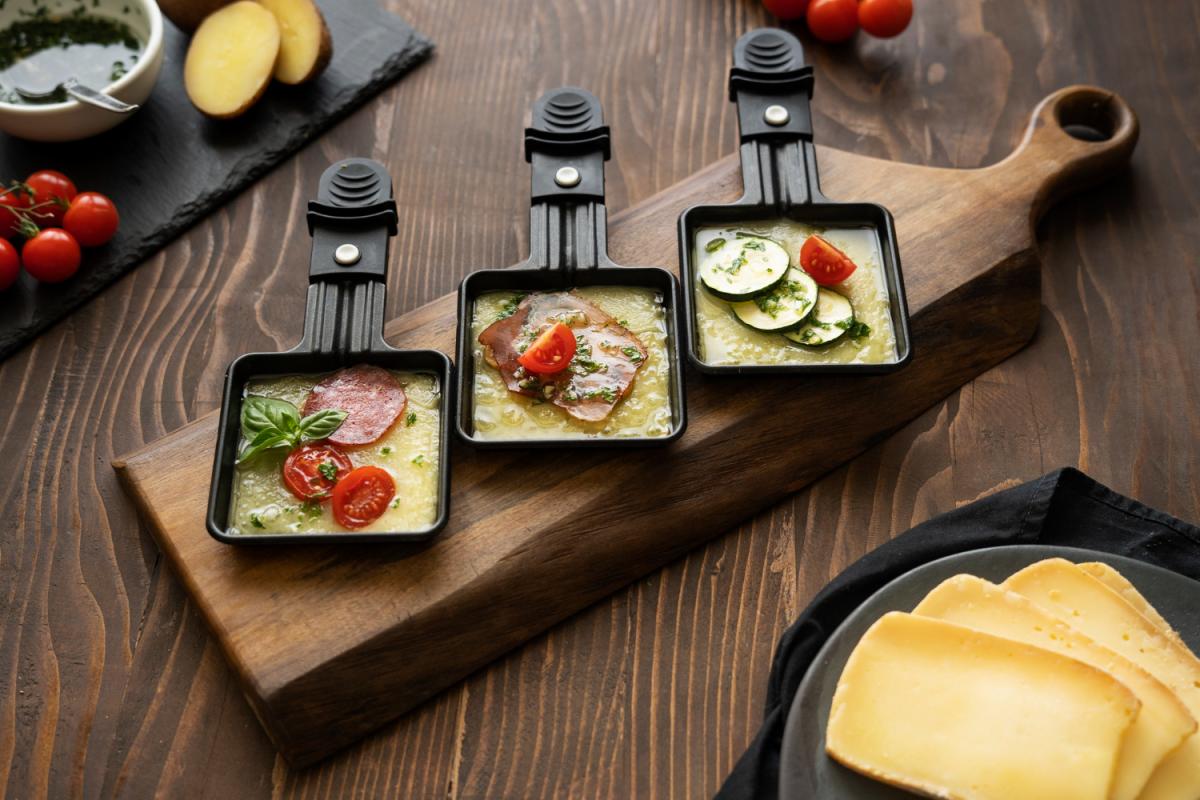Switzerland is known for its stunning landscapes, precision watches, and of course, its delicious cheese.
One particular Swiss culinary tradition that has gained popularity worldwide is raclette.
This unique dish, which originated in the Alpine regions of Switzerland, has become a favorite among cheese lovers around the globe.
In this article, we will explore the history, preparation, and cultural significance of raclette, as well as its growing popularity in different parts of the world.
The Origins of Raclette
The origins of raclette can be traced back to the Alpine regions of Switzerland, where it was first enjoyed by shepherds and farmers.
The word “raclette” comes from the French word “racler,” which means “to scrape.” This refers to the traditional method of melting the cheese and scraping it onto a plate.
Historically, raclette was a simple and practical dish. Shepherds would melt a wheel of raclette cheese by the fire and scrape the melted cheese onto boiled potatoes, pickles, and onions.
This hearty meal provided them with the necessary sustenance during the long, cold winters in the mountains.
The Preparation of Raclette
Raclette is traditionally made from cow’s milk and has a semi-hard texture. The cheese is typically aged for several months, which gives it a distinct flavor and aroma.
To prepare raclette, a wheel of cheese is cut in half and placed near a heat source, such as an open fire or a special raclette grill.
As the cheese melts, it becomes soft and gooey. The melted cheese is then scraped onto a plate and served with a variety of accompaniments.
The most common accompaniments include boiled potatoes, pickles, onions, and cured meats. The combination of the melted cheese and these flavorful ingredients creates a truly indulgent and satisfying meal.
The Cultural Significance of Raclette
Raclette holds a special place in Swiss culture and is often enjoyed during social gatherings and festive occasions.
It is a dish that brings people together, as it encourages conversation and conviviality. In Switzerland, raclette is commonly served during winter holidays, family reunions, and even weddings.
Traditionally, raclette was prepared using a large wheel of cheese, which was shared among several people. This communal aspect of raclette is still prevalent today, as it is often enjoyed in groups.
The process of melting the cheese and scraping it onto individual plates creates a sense of anticipation and excitement.
Raclette’s Global Popularity
Over the years, raclette has gained popularity outside of Switzerland and has become a beloved dish in many countries around the world.
Its unique combination of flavors and textures has captivated the taste buds of cheese enthusiasts everywhere.
In France, raclette has become a staple in many households and is often enjoyed during winter months. It is also a popular dish in the French Alps, where it is served in mountain chalets to skiers and hikers.
In recent years, raclette has also gained a following in the United States. Many restaurants now offer raclette as a specialty dish, and it has become a popular choice for dinner parties and social gatherings.
Raclette grills, which allow individuals to melt their own cheese at the table, have also become a trendy kitchen appliance.
The Health Benefits of Raclette
While raclette is undoubtedly a rich and indulgent dish, it also offers some surprising health benefits. Cheese, in general, is a good source of calcium, protein, and vitamins.
Raclette cheese, in particular, is known for its high calcium content, which is essential for maintaining strong bones and teeth.
Additionally, raclette is often served with a variety of vegetables, such as pickles and onions, which provide important nutrients and antioxidants.
The combination of cheese and vegetables makes raclette a well-rounded and satisfying meal.
The Future of Raclette
As raclette continues to gain popularity worldwide, it is likely to evolve and adapt to different culinary traditions and tastes.
Chefs and food enthusiasts are experimenting with new flavors and ingredients to create unique variations of this classic dish.
Get the news first!
Furthermore, the growing interest in artisanal and locally sourced products has led to the production of high-quality raclette cheese in different parts of the world.
This allows cheese lovers to enjoy the flavors of raclette without having to travel to Switzerland.
Embracing the Swiss Culinary Tradition
Raclette is more than just a delicious cheese dish; it is a cultural tradition that brings people together.
Its rich history, unique preparation method, and communal nature have made it a beloved culinary tradition in Switzerland and beyond.
Whether enjoyed in a cozy Swiss chalet or at a trendy restaurant in a bustling city, raclette is a dish that never fails to delight the senses.
So, the next time you have the opportunity to savor raclette, take a moment to appreciate the centuries-old tradition and the craftsmanship that goes into creating this delectable dish. Bon appétit!

Make Cheese!
